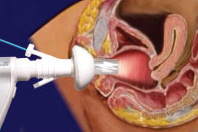
Photo from wikipedia
Background Adverse employment outcomes pose significant challenges for cancer patients, though data patients with gynecologic cancers are sparse. We evaluated the decrease in employment among patients in the year following… Click to show full abstract
Background Adverse employment outcomes pose significant challenges for cancer patients, though data patients with gynecologic cancers are sparse. We evaluated the decrease in employment among patients in the year following the diagnosis of a gynecologic cancer compared with population-based controls. Methods Patients aged 18 to 63 years old, who were diagnosed with cervical, ovarian, endometrial, or vulvar cancer between January 2009 and December 2017, were identified in Truven MarketScan, an insurance claims database of commercially insured patients in the USA. Patients working full- or part-time at diagnosis were matched to population-based controls in a 1:4 ratio via propensity score. Multivariable Cox proportional hazards models were used to evaluate the risk of employment disruption in patients versus controls. Results We identified 7446 women with gynecologic cancers (191 vulvar, 941 cervical, 1839 ovarian, and 4475 endometrial). Although most continued working following diagnosis, 1579 (21.2%) changed from full- or part-time employment to long-term disability, retirement, or work cessation. In an adjusted model, older age, the presence of comorbidities, and treatment with surgery plus adjuvant therapy versus surgery alone were associated with an increased risk of employment disruption (p<0.0003, p=0.01, and p<0.0001, respectively) among patients with gynecologic cancer. In the propensity-matched cohort, patients with gynecologic cancers had over a threefold increased risk of employment disruption relative to controls (HR 3.67, 95% CI 3.44 to 3.95). Conclusion Approximately 21% of patients with gynecologic cancer experienced a decrease in employment in the year after diagnosis. These patients had over a threefold increased risk of employment disruption compared with controls.
Journal Title: International Journal of Gynecological Cancer
Year Published: 2021
Link to full text (if available)
Share on Social Media: Sign Up to like & get
recommendations!